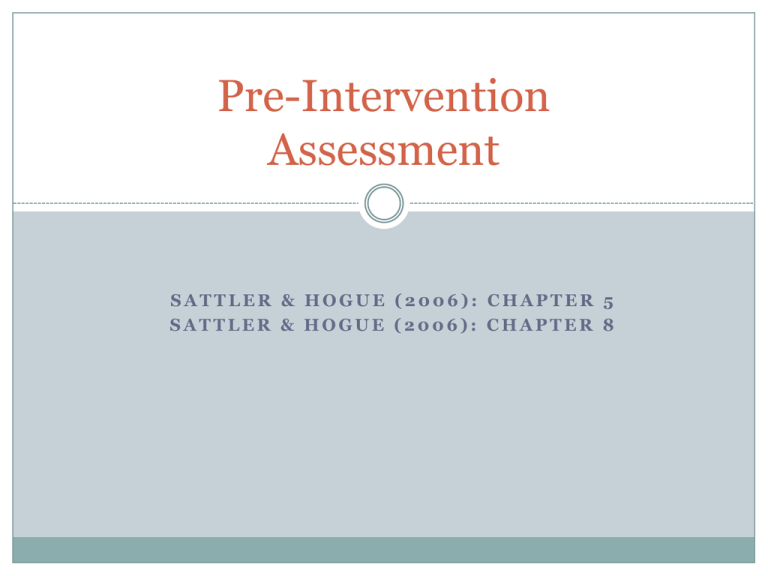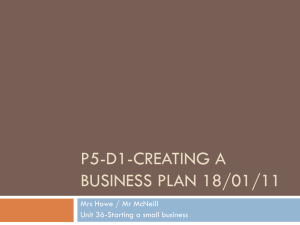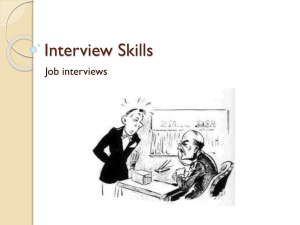sattler & hogue (2006): chapter 8
advertisement

Pre-Intervention Assessment SATTLER & HOGUE (2006): CHAPTER 5 SATTLER & HOGUE (2006): CHAPTER 8 Case Conceptualization Chart Initial Referral Information Apriori Questions Tools Case Conceptualization Chart Initial Referral Inattentive Information Apriori Questions Tools Case Conceptualization Chart Initial Referral Inattentive Information Apriori Questions Health problems? System = worries? Sleep problems? Comprehension problems? ADHD? Tools Case Conceptualization Chart Initial Referral Inattentive Information Apriori Questions Tools Health problems? Interview-Bckgrnd System = worries? Interview-Dx Sleep problems? Observation-home Comprehension problems? Observationschool ADHD? IQ Achievement Rating Scales Observational Methods SATTLER & HOGUE (2006): CHAPTER 8 Systematic Observations Time/event appropriate Operationally define the behavior you are observing Have a planned recording technique May want to have more than one setting. May want to have more than one observer. Generally works best for high incidence behaviors. Must have a plan for how to handle injurious behaviors. Can take place in a planned (forced) situation or in a natural situation. Observations should include… Setting information: what does it look like comfort levels anything unique or unusual in the setting. Patterns: including leaders/ followers (organizational patterns) communication patterns interactions with the settings (ecological patterns). Opportunities: Are basic needs met? Are individuals receiving developmentally appropriate stimulation? Are individuals receiving social stimulation? Designing an Observation How many times will you observe? How long will you observe? When/ where will you observe? What behaviors will you observe? How will you record the data? Recording Data Write a narrative describing the observation. Create an audio or video record the observation Use a specific form to collect the data. Anecdotal record form: You write the time and a description of each significant behavior following a narrative section on settings, patterns, and opportunities. Quantitative record form Interval recording (time sampling, interval sampling, & interval time sampling). Event recording (event sampling) Time Sampling: Types Partial Interval Time Sampling Record the behavior if it happens once during a set time period. For example, if it occurs at all during a 60 second period. Whole-Interval Time Sampling Record the behavior if it occurs during the whole interval. For example, if it occurs lasts from the first second to the last in a 60 second interval. Other time sampling methods Other methods are available but not often used. Time Sampling: Pre-planning Choose the type that you want to use Choose the length of the observation period Choose the length of the interval Select target behaviors Choose a method of recording the behavior. Time Sampling: Example Targeted Behaviors @10 sec @20 Sec @30 Sec @40 Sec @50 Sec @60 sec Time Sampling: Example Targeted Behaviors @10 sec Out of his seat X Making noises Not working Partial-interval @20 Sec @30 Sec @40 Sec @50 Sec X X X X X X @60 sec X X X X X Event Sampling Record every time the client performs a certain action. For example: Targeted Behaviors Number of times In 3 min period Out of his seat ||| Making noises |||| ||| Not working || Observation: Quantitative Data Frequency: How many X in Y minutes (e.g., 3 times per min). Duration: How long is this happening (e.g., he cried for 3 min). Duration: What percentage of time is this happening (e.g., he cried for 45% of the time). Latency: How long does it take between the stimulus and the response. (e.g., he started crying 20 seconds after his mother left) Other People’s Observations Rating Scales: Have other people rate the client’s behavior. Based on a general feeling and not a direct observation. Likert scale: 1, 2, 3, 4, 5 (1=never; 5=always) Review of Records: School records Background questionnaires Medical records Interviews Parent Teacher Other General Interviewing Techniques SATTLER & HOGUE (2006): CHAPTER 5 Qualities of a Clinical Interview Formal Planned Structured Purposeful One-way question/ answer pattern Interviewer does not show emotional reactions Confidential Assessment Interview vs. Therapeutic Interview Therapeutic Interview: Purpose is to get the client to open up and identify their own problems. Open questions mostly Clinical Interviews: Purpose is for the clinician to understand the client’s problems. Mixture of open and closed questions. Indirect open (questions): Describe how you feel about school? How do you feel most days? Direct (closed) questions: Do you have friends? Have you ever tried to hurt yourself? Assessment Interview &Therapeutic Interview Similarities between assessment and therapeutic interviews include: Rapport: client must feel comfortable with the clinician. Clinician is usually: Respectful Genuine Empathetic Skills: knowledge of interviewing, counseling techniques, child development, etc. Goals: sets of questions are purposeful and planned to reach a single goal (either information gathering or client improvement). Function of assessment interview Communicate the assessment process Obtain background information Better describe the problem (severity, context, etc.) Clarify misunderstandings about the assessment and counseling services held by parents or children. Verify previous dx and hx Formulate hypotheses about the child and system Learn about the receptiveness of the child and family to treatment. Weaknesses in the Assessment Interview Psychometric weaknesses (reliability, validity, etc.) When the interviewer is weak or novice, then the wrong information is solicited and/or no useful information is obtained. Interviewees may have something keeping them from being clear (e.g., a young child, elderly, psychotic, etc.) or truthful (e.g., personality disorder, fear, abuse, etc.). Strongly influenced by clinical rapport with the interviewer. Types of Interviews Unstructured Interview Tells their story Guided by the interviewer based on a loose agenda. Example, “what brought you in today?” Semi-structured Interview Interviewer gives some questions, but lets the interviewee have some freedom in their response. Guided by the interviewer based on a firm agenda. Example, “describe your problems with depression.” Structured Interview Interviewer has concrete questions that are formalized. Guided by the interviewer based on a set agenda. Example, “how many times have you attempted suicide?” Types of Interviews Unstructured Interview Strengths: May get more information than just “what is asked.” Weaknesses: Poor psychometrics Interviewer skill level needed: Expert Semi-structured Interview Strengths: provides a guided overview of all of the client’s potential issues without making them feel “unheard.” Weaknesses: May miss information, problems with psychometrics. Interviewer skill level needed: Moderate Structured Interview Strengths: Designed to cover most topics, better psychometrics (however, there are still problems with this). Weaknesses: Children may not understand the question as asked, may not be culturally relevant, may miss important information. Interviewer skill level needed: Novice Before the Interview Know why you are conducting the interview. Review records and obtain as much info about the client before the interview. Make sure you are aware of any client-specific issues that might effect your interview (e.g., culture, health, language proficiency, etc.) Be prepared to describe confidentiality at the appropriate level to the client’s needs. Pay attention to the client’s mental health status to determine the validity of the information at the time of the interview. During the Interview Be prepared to answer questions as well as ask them. Monitor how the client is making you feel and react to their words or actions. Evaluate how things are going and be willing to change your interview style if need be. Do not try to fill all of the silences. Pay attention to when their words and actions do not connect. Record the information accurately. Do not feel that you have to have all of your assessment interview completed in the first session. More questions may arise or you may need more time. Before ending the interview, allow for questions from the client. Plan how you want to end the interview. The client should leave feeling respected. Listening Be prepared ahead of time. Listen to what they are actually saying, not what you think (or expect them to be) they are saying. Pay attention to who you are paying attention to (e.g., when 2 people are in the room are they both being listened to equally… why or why not?) Meta-listen (listen to how they are saying things and not just what they are saying). Let silences happen. Pay attention to when they are deflecting, only answering partially, or may be trying to “not” say something. Types of Questions to Avoid Yes-no questions Double-barreled questions Long, multiple questions Leading questions Coercive Questions Embarrassing or accusatory questions Why questions Asking Tough Questions Must have rapport. Must be sensitive to body language, silences, and refusal to speak. Be patient; you may have to build a relationship before you can ask these questions. Allow for silences. Admit that the conversation/ topic can be difficult and/or awkward. Monitor for anxiety from the client. Acknowledge the client’s stress and be positive about their ability to open up. Use reflective statements for what they say and do. Diagnostic Interview Usually is a specific form of clinical interview. Clinician bases questions of a diagnostic criteria for a suspected area of disability. Questions may be formally written down prior the interview or can be obtained through a published interview (e.g., Brown ADHD Interview). May involve sensitive questions, so this should be done once you have some rapport established. Should not just be a checklist (yes/no) of symptoms.





